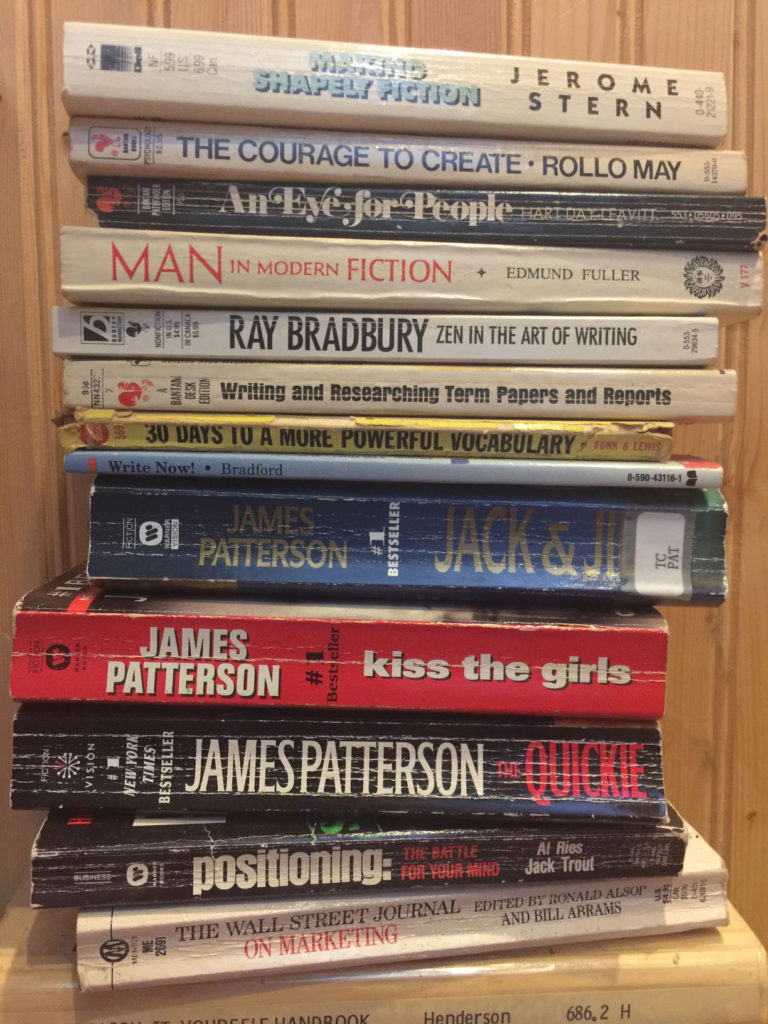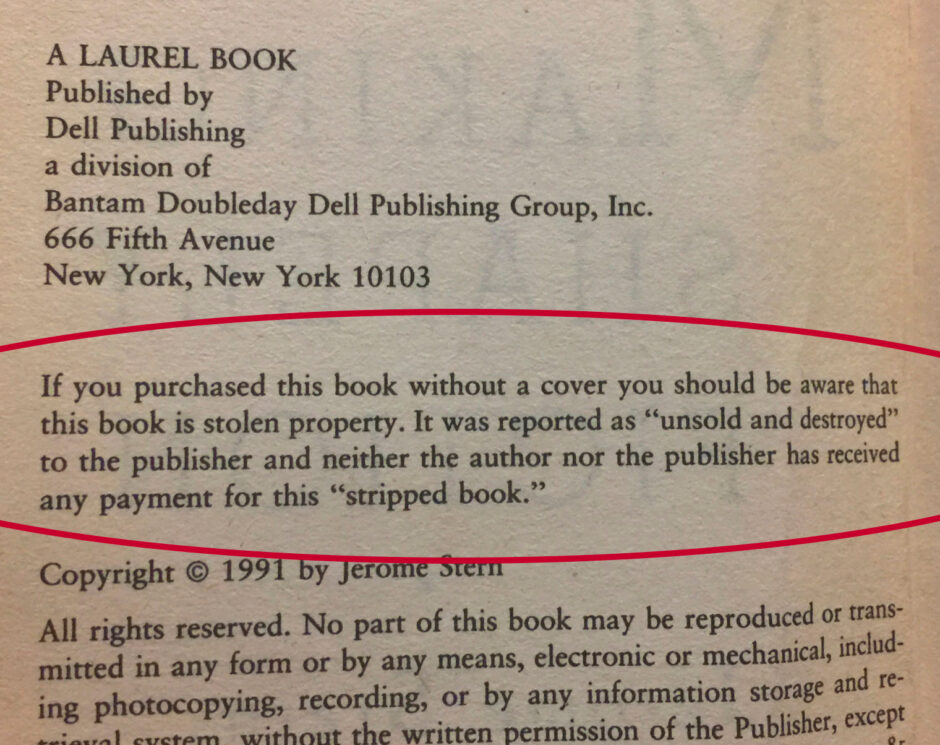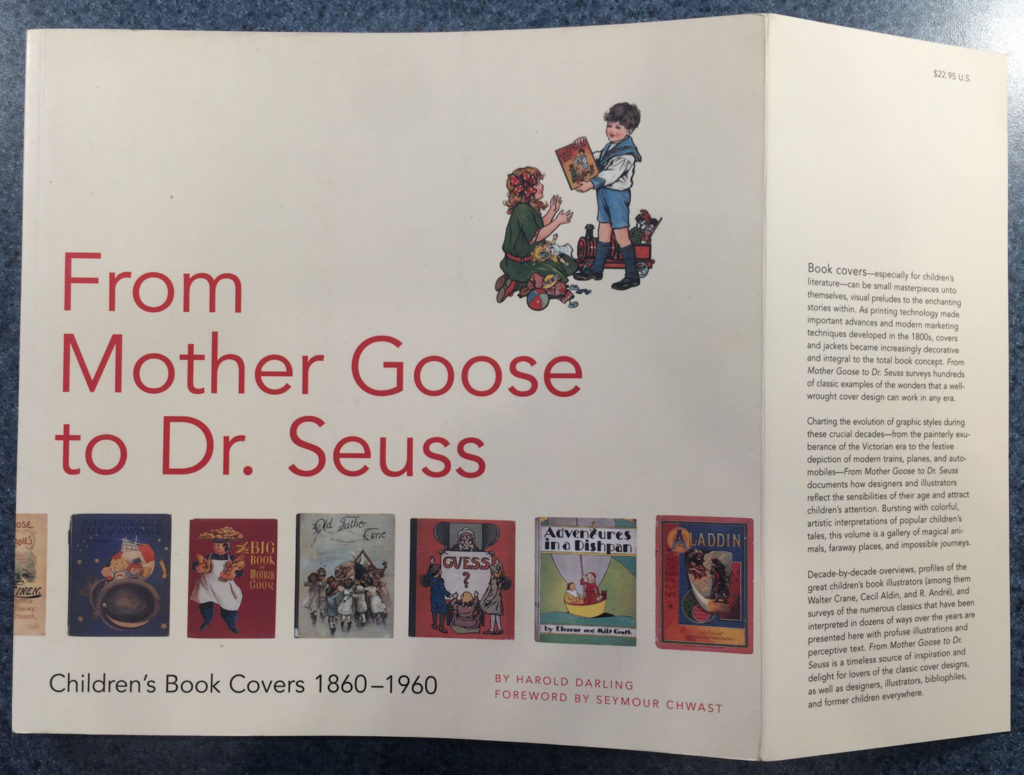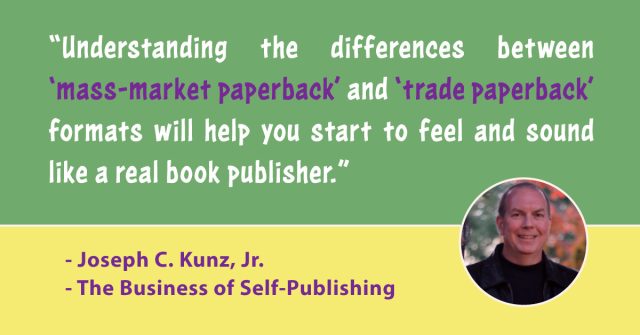Podcast: Play in new window | Download
Subscribe: Apple Podcasts | Spotify | Pandora | RSS | More
Updated December 23, 2022
Subtitle
Understanding paperback formats in the U.S.
Synopsis
Here is an explanation of the differences between the two main paperback books: mass-market paperbacks and trade paperbacks. As a self-publisher, these are the two formats you will typically deal with. Therefore, you must be familiar with and understand the similarities and differences. So, here is a quick discussion and explanation of mass-market and trade paperbacks.

What You Will Learn
1. You will learn the significant characteristics of mass-market and trade paperback books.
2. You will learn how these paperbacks are similar and different.
3. You will learn how British paperbacks compare to the U.S.’s.
Introduction
In the U.S., the most common formats for fiction and non-fiction printed books fall into three main categories:
1. Hardcover;
2. Trade paperback; and,
3. Mass-market paperback.
Each of them can then get broken down into several more categories. But here, we are concerned with understanding the differences between the two types of paperbacks. As a self-publisher, these are the two formats you will typically deal with. Therefore, you must be familiar with and understand the similarities and differences.

Here is a quick discussion and explanation of mass-market and trade paperbacks:
1. Mass-Market Paperback Books
For the masses on a budget
A mass-market paperback is a small, usually non-illustrated, less-expensive bookbinding format. The standard size is 6.75” tall x 4.25” wide and frequently uses a font, leading (pronounced: ledding), and smaller line spacing.
When the big publishing companies sell them, they are often released after the hardcover edition. And they are most known for being sold in non-traditional bookselling locations such as airports, newsstands, drug stores, supermarkets, etc. Some people refer to them informally as “pocketbooks.”

Examples of mass-market fiction and non-fiction paperback books.
A. Sales and Distribution
The books in non-traditional locations are generally within the periodical-distribution industry. These books get distributed by the same companies placing magazines in these locations. Conversely, the trade paperbacks get distributed by book wholesalers and distributors – or trade channels – hence the name “trade paperback.”

Title page of a mass-market paperback book. The paragraph in the middle discusses the cover and what happens when a book is stripped.
B. Strippable vs. Non-strippable
Mass-market paperbacks are also distinguished from hardcover and trade by the different business practices that publishers and booksellers apply to them. Mass-markets are “strippable.”
This means bookstores can rip off the front cover and return only the cover for full credit from the distributor. The book retailers are supposed to destroy the rest of the book. Inversely, trade paperbacks are not strippable. Therefore, book retailers must return the entire book, not just the cover.
C. Self-publishers
When self-publishers publish their fiction books, they are typically only released in the mass-market format. This format helps keep the cover price down, making these books more attractive to a broader audience in a competitive market. These books will most commonly never receive a hardcover printing.
2. Trade Paperback Books
Less expensive version of the hardcover edition
They are typically the same size as the hardcover books, but slightly smaller because the binding is made differently. They usually have a thicker cover than mass-market books.
And they don’t have the hardcover’s added thickness, width, and height. You’ll know whether a book is a trade paperback by looking at the back cover and the title page. Here you would typically find the strippable notice.

Examples of non-fiction trade paperback books.
A. Sizes and Cover Prices
The self-publishers that write and publish non-fiction will usually publish trade paperbacks. And these will typically be 5.5” x 8.5” or 6” x 9”, and the less common 8.5” x 11”. The retail cover price is almost always higher than the mass-market books and lower than the hardcover editions.

Mass-market paperback on the left side, with the triangle and the letter S indicating that the book is strippable; Trade paperback on the right side with a triangle with no letter S indicating that the book is not strippable. In addition, the mass-market book has a UPC barcode; and the trade has a Bookland/EAN barcode. Also, notice the price and size differences.
B. French Flap
A recent feature of trade paperbacks is the “French flap,” or gatefold. This feature is an extension of the front and back cover with a section that folds over onto itself, just like the paper wraps or dust jackets typically found on hardcover books. It is meant to make the trade paperback appear more like a hardcover edition – but with a lower cover price.

Trade paperback with French flaps, also known as a gatefold. These flaps mimic the dust jacket of a hardcover book. They are an extension of the front and back cover. They also assist the reader as a way to save their place in the book.
3. A Quick Note About Paperback Book Formats in the U.K.
“A Format” is typically 110mm x 178mm (4.33″ x 7.01″), similar to the U.S.’s standard mass-market paperback;
“B Format” is typically 130mm x 198mm (5.12″ x 7.80″), similar to the U.S.’s large mass-market paperback, or small trade paperback;
“C Format” is typically 135mm x 216mm (5.32″ x 8.51″), similar to the U.S.’s standard trade paperback.

Conclusion
Understanding the differences between these two standard book formats will help you start to feel and sound like a real book publisher. Also, when you explore the bookstore shelves searching for design ideas for your book, you will better understand what you’re looking at.
This new knowledge will help you make a more informed decision about what your book should look like and what you want it to look like. Hopefully, you are one step closer to designing and creating a professional-looking book that you can be very proud to have produced.
Questions to Think About
1. Have you taken the time to explore the different book formats while browsing in a big bookstore?
2. What struck you about the differences and similarities?

